Discover 35 hidden attractions, cool sights, and unusual things to do in Raleigh (United States). Don't miss out on these must-see attractions: North Carolina Museum of Natural Sciences, North Carolina Museum of History, and North Carolina State Capitol. Also, be sure to include NCSU Belltower in your itinerary.
Below, you can find the list of the most amazing places you should visit in Raleigh (North Carolina).
Table of Contents
North Carolina Museum of Natural Sciences
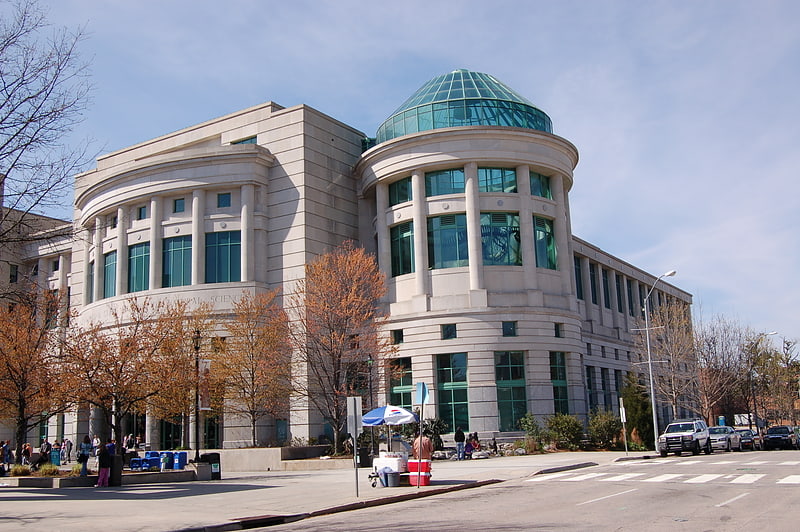
Museum of NC's geology, flora and fauna. The North Carolina Museum of Natural Sciences is located in Raleigh, North Carolina as the oldest established museum in North Carolina and the largest museum of its kind in the Southeastern United States. With about 1.2 million visitors annually, as of 2013 it was the state's most popular museum or historic destination among visitors.
The museum has six facilities on five campuses: the Nature Exploration Center and Nature Research Center on Jones Street in downtown Raleigh, the Prairie Ridge Ecostation satellite facility and outdoor classroom in northwest Raleigh near William B. Umstead State Park, the former North Carolina Museum of Forestry in Whiteville, and the former Grifton Nature & Science Center in Grifton. In 2020 the newest facility, the North Carolina Museum of Natural Sciences at Greenville, was announced and opened to the public on September 18th, 2021. NCMNS is a division of the state Department of Natural and Cultural Resources.[1]
Address: 11 W Jones St, 27601-1029 Raleigh (North Central)
North Carolina Museum of History
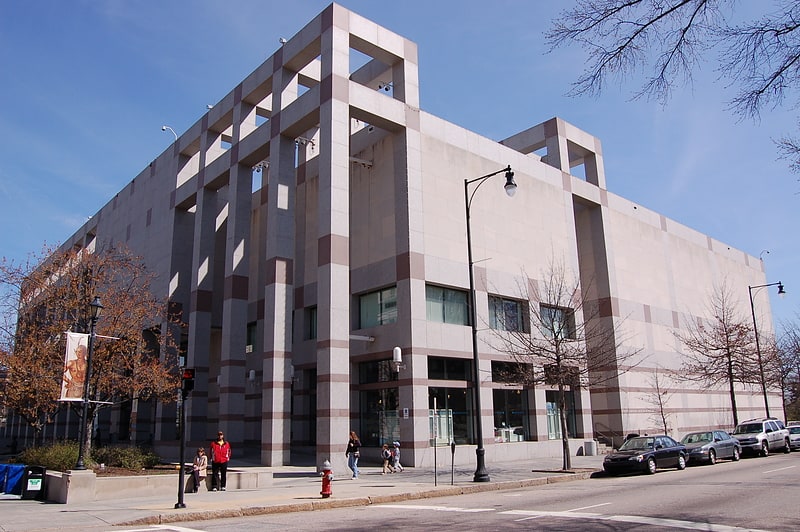
Museum. The North Carolina Museum of History is a history museum located in downtown Raleigh, North Carolina. It is an affiliate through the Smithsonian Affiliations program. The museum is a part of the Division of State History Museums, Office of Archives and History, an agency of the North Carolina Department of Cultural Resources.[2]
Address: 5 E Edenton St, 27601 Raleigh (North Central)
North Carolina State Capitol
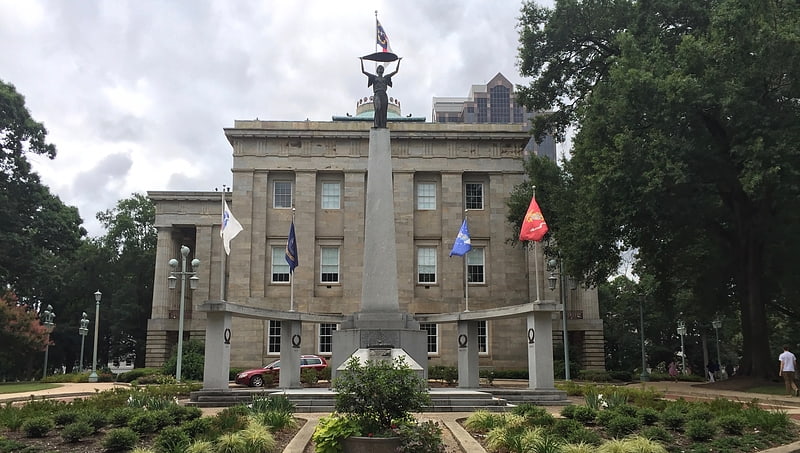
Stately civic site with tours and events. The North Carolina State Capitol is the former seat of the legislature of the U.S. state of North Carolina which housed all of the state's government until 1888. The Supreme Court and State Library moved into a separate building in 1888, and the General Assembly moved into the State Legislative Building in 1963. Today, the governor and his immediate staff occupy offices on the first floor of the Capitol.[3]
Address: 1 E Edenton St, 27601-1011 Raleigh (North Central)
NCSU Belltower
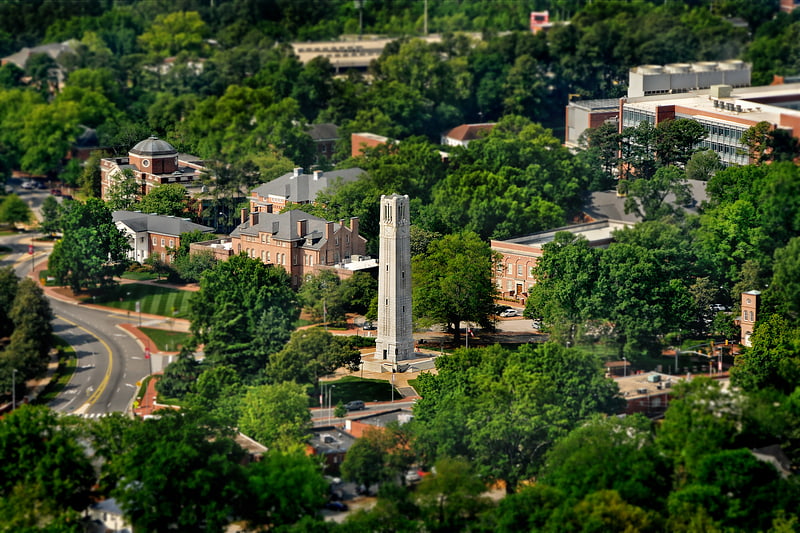
Monument in Raleigh, North Carolina. The North Carolina State University Memorial Belltower is a 115-foot-tall free-standing bell tower on the Main Campus of North Carolina State University in Raleigh, North Carolina Conceived as a war memorial to honor university alumni killed in World War I and the university's overall participation in the conflict, the Belltower now serves as a perpetual memorial for N.C. State students and alumni who gave their lives in the service of the nation. A prominent university symbol, the tower is a popular rallying point for the campus community.[4]
Address: 2011 Hillsborough St, Raleigh (Hillsborough)
City Market
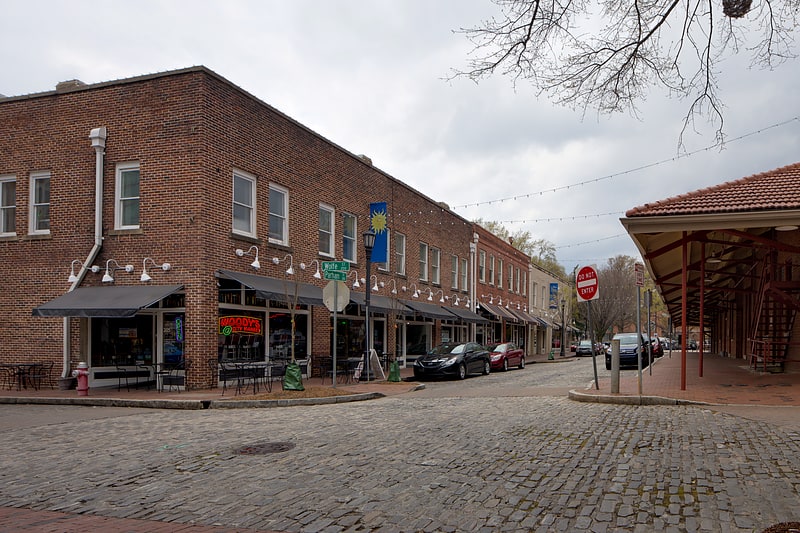
Historical place in Raleigh, North Carolina. City Market in Raleigh is a market located in Raleigh, North Carolina, United States. It was founded in October, 1914. It became known as a historic place when Raleigh City Council secured a grant from the North Carolina Division of Archives & History to study the architectural resources surrounding Moore Square, in 1980. It is one of the major tourist attractions in Raleigh. In early May, 2008, the market was the location of an art project unveiling by the Visual Art Exchange. The market hosts a monthly festival, called First Friday, on the first Friday of every month.[5]
Address: 306 Parham St c, 27601-1818 Raleigh (Central Raleigh)
North Carolina Museum of Art
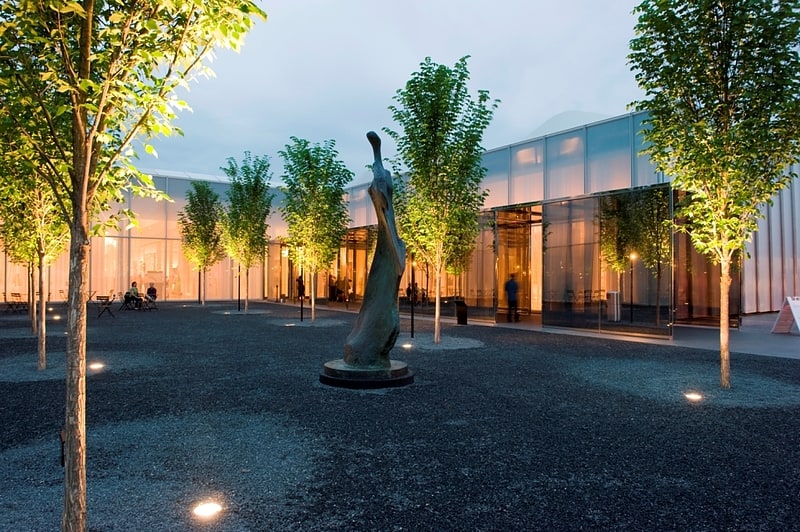
Museum in Raleigh, North Carolina. The North Carolina Museum of Art is an art museum in Raleigh, North Carolina. It opened in 1956 as the first major museum collection in the country to be formed by state legislation and funding. Since the initial 1947 appropriation that established its collection, the Museum has continued to be a model of enlightened public policy with free admission to the permanent collection. Today, it encompasses a collection that spans more than 5,000 years of artistic work from antiquity to the present, an amphitheater for outdoor performances, and a variety of celebrated exhibitions and public programs. The Museum features over 40 galleries as well as more than a dozen major works of art in the nation's largest museum park with 164-acres. One of the leading art museums in the American South, the NCMA recently completed a major expansion winning international acclaim for innovative approaches to energy-efficient design.[6]
Address: 2110 Blue Ridge Road, Raleigh (Northwest Raleigh)
PNC Arena
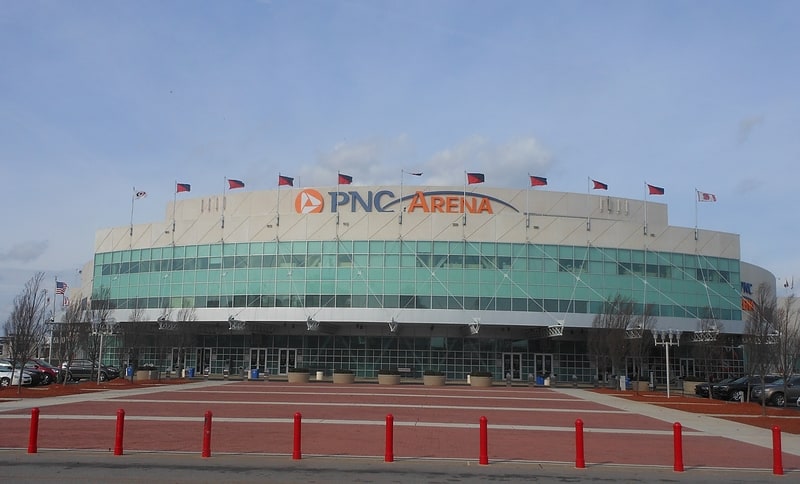
Arena in Raleigh, North Carolina. PNC Arena is an indoor arena located in Raleigh, North Carolina. The arena seats 18,680 for ice hockey and 19,722 for basketball, including 61 suites, 13 loge boxes and 2,000 club seats. The building has three concourses and a 300-seat restaurant.
PNC Arena is home to the Carolina Hurricanes of the National Hockey League and the NC State Wolfpack men's basketball team of NCAA Division I. The arena neighbors Carter–Finley Stadium, home of Wolfpack Football; the North Carolina State Fairgrounds and Dorton Arena (on the Fairgrounds). The arena also hosted the Carolina Cobras of the Arena Football League from 2000 to 2002. It is the fourth-largest arena in the ACC (after the Carrier Dome, KFC Yum! Center and the Dean Smith Center) and the eighth-largest arena in the NCAA.[7]
Address: Raleigh, 1400 Edwards Mill Road
Wells Fargo Capitol Center
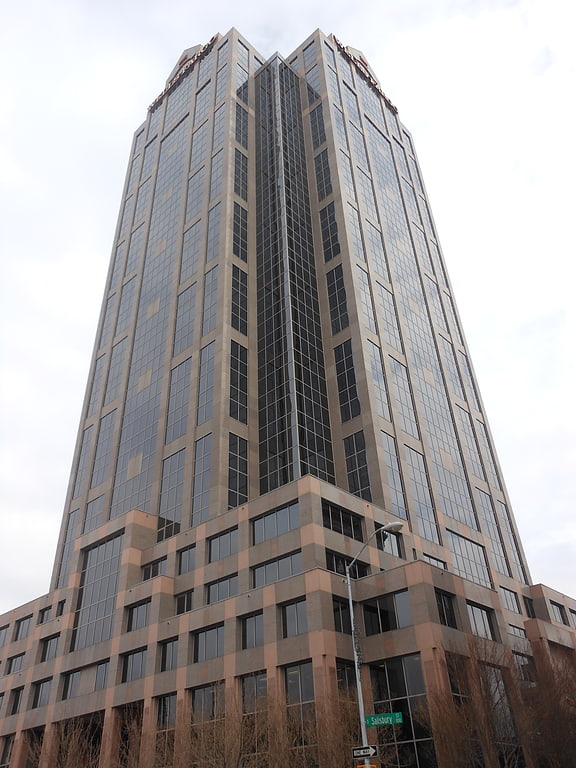
Skyscraper in Raleigh, North Carolina. Wells Fargo Capitol Center is a 30-story 121.92 m skyscraper at 150 Fayetteville Street in Raleigh, North Carolina with 544,482 square feet of space. Completed in 1990, it was one of the downtown Raleigh's two tallest buildings for nearly twenty years, and is currently third tallest.[8]
Marbles Kids Museum
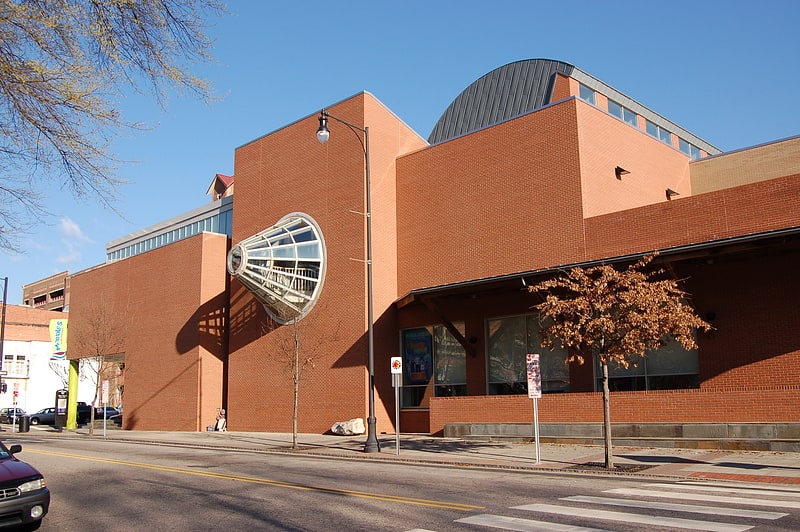
Museum in Raleigh, North Carolina. Marbles Kids Museum is a nonprofit children's museum located in downtown Raleigh, North Carolina in the Moore Square Historic District.
Marbles was founded in 2007 as a result of the merger between Exploris, an interactive global learning center, and Playspace, a children's museum aimed at preschool through early elementary age children. Marbles mission is to "..spark imagination, discovery and learning through play."[9]
Address: 201 E Hargett St, 27601 Raleigh (Central Raleigh)
Joel Lane Museum House
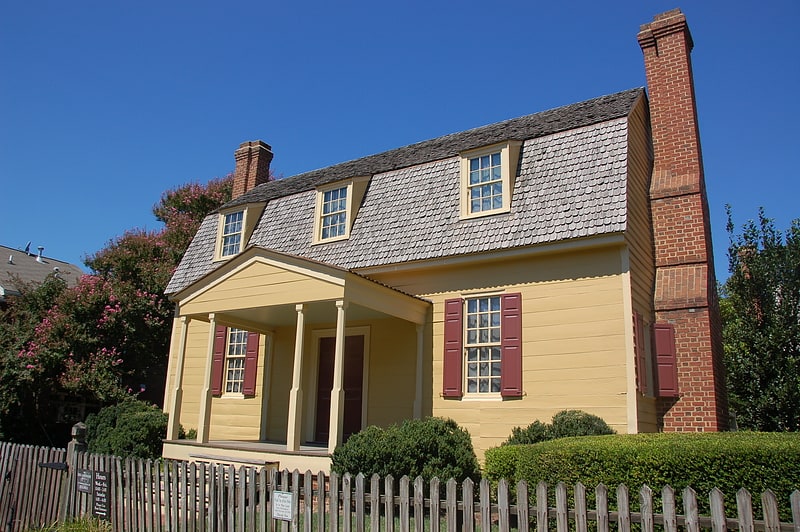
Museum in Raleigh, North Carolina. The Joel Lane House, also known as Wakefield, was built in 1769 and is now a restored historic home and museum in Raleigh, North Carolina. It is the oldest dwelling in Wake County and contains collections of 18th century artifacts and period furnishings. The museum grounds include a detached middle-class home built circa 1790, a formal city garden, and a period herb garden. The house is named after Joel Lane, the "Father of Raleigh" and "Father of Wake County."
In the late 1760s, Lane settled at Wake Cross Roads located in colonial Johnston County. Lane and his house played a key role in North Carolina's transition from colony to state and in the establishment of Raleigh as the state capital. Joel Lane's plantation manor stood on a small hill overlooking the future site of Raleigh. Lane owned thousands of acres, which enabled him to be influential in politics.
Lane was a member of the colonial General Assembly, and successfully lobbied to create Wake County in 1770, which was, at the time, a sparsely-settled wilderness. The county was named "Wake" in honor of Margaret Wake, wife of colonial Governor William Tryon. In 1771, Wake County's first county court is believed to have convened at his home. Lane was appointed a member of the court, a position he held until his death. During the Revolutionary War, Wake Cross Roads was the site of important government meetings, both formal and informal. In 1776, Lane hosted the colony Council of Safety; the following year, he obtained a license for a small inn. From May to June 1781, Lane's property was the setting for a session of the state General Assembly. Lane served in the state Senate in 11 of the 14 sessions from 1782 to 1794. He was also a delegate to the 1789 convention in Halifax that ratified the United States Constitution.
Lane was directly involved in the decision to locate the permanent capital of the state in Wake County. In 1792, the legislature authorized the purchase of 1,000 acres (4 km2) of his land upon which to establish the city of "Raleigh" as the new center of state government. The community's western boundary was drawn just east of Lane's house, and a street of the city was named in his honor. After Lane's death in 1795, Lane's house served several owners before being purchased by businessman William Boylan in 1818. The house, along with Montfort Hall, remained in the Boylan family until 1909. During this time, the city of Raleigh absorbed the house into its expanding boundaries. Lane's former plantation became the site of new streets, homes and businesses. In 1911, the house was moved a short distance. In 1927, Lane's house was purchased by the National Society of Colonial Dames of America in the State of North Carolina to ensure its preservation. The organization continues to operate this Raleigh Historic Landmark as a house museum.
In 2019, to celebrate the house's 250th anniversary, a restoration team removed 26 layers of paint in order to repair the damaged wood underneath. The house was then repainted to match its original color of garnet red.[10]
Address: 160 S Saint Marys St, 27603-1618 Raleigh (Hillsborough)
Pullen Park
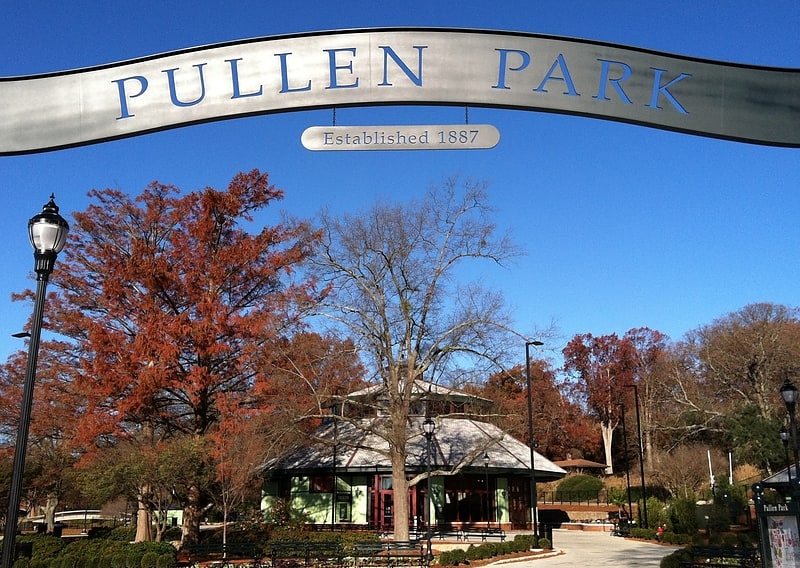
Amusement park in Raleigh, North Carolina. Pullen Park is a 66.4-acre public park immediately west of downtown Raleigh, North Carolina. It is located on Ashe Avenue and is adjacent to the Main and Centennial campuses of North Carolina State University, covering an area between Western Boulevard and historic Hillsborough Street. Founded in 1887, Pullen Park is the oldest public park in North Carolina.
The park features picnic areas, a concessions stand along with several small rides including the Pullen Park Carousel, train, and kiddie boats. Pedal boats are also available for rent seasonally on the park's small lake. The Pullen Aquatic Center, Pullen Arts Center and Theatre in the Park are also located on the park grounds. It is one of the most famous and well-known parks in the Research Triangle region.
The East Coast Greenway, a 3,000 mile long system of trails connecting Maine to Florida, runs through Pullen Park.[11]
Address: 408 Ashe Ave, 27606-2149 Raleigh (Hillsborough)
Lake Lynn
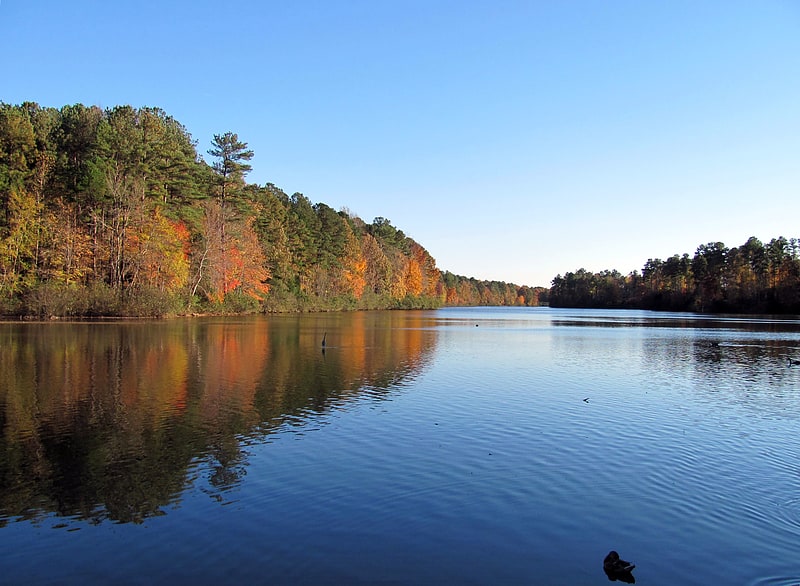
Lake in North Carolina. Lake Lynn is a man-made lake in Raleigh, North Carolina. The lake was created for flood control purposes in 1976 by damming Hare Snipe Creek, a tributary of Crabtree Creek. The lake has an area of 55.7 acres and lies entirely within the city of Raleigh's 75-acre Lake Lynn Park. The park includes a 2.8 mi paved trail around the lake, as well as a community center, playground, and tennis courts.
Lake Lynn Dam (also named Crabtree Watershed Dam #22b), is a 42 foot (13 m) high, 620 foot (190 m) long earth dam.[12]
Address: Lynn Rd, 27613 Raleigh (Northwest Raleigh)
Carter–Finley Stadium

Stadium in Wake County, North Carolina. Wayne Day Family Field at Carter–Finley Stadium is home to the NC State Wolfpack football team. It was opened in 1966 and has grown to a seating capacity of 58,000 seats.[13]
Address: 4600 Trinity Rd, 27607-3924 Raleigh (West Raleigh)
Sacred Heart Cathedral
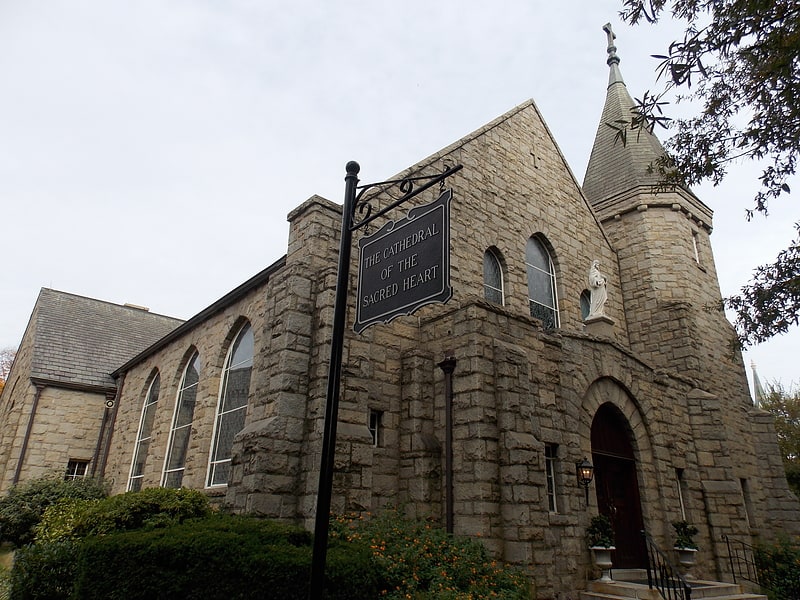
Catholic church in Raleigh, North Carolina. Sacred Heart Church is a Catholic church located on Hillsborough Street in downtown Raleigh, North Carolina, United States. The church served as the cathedral of the Diocese of Raleigh from 1924 to 2017. In 1978 it, and the other parish buildings, was included as a contributing property in the Capitol Area Historic District, which is listed on the National Register of Historic Places. Sacred Heart is also the location of the Cathedral School, formally called Sacred Heart Cathedral School.[14]
Address: 200 Hillsborough St, 27603 Raleigh (North Central)
City of Raleigh Museum
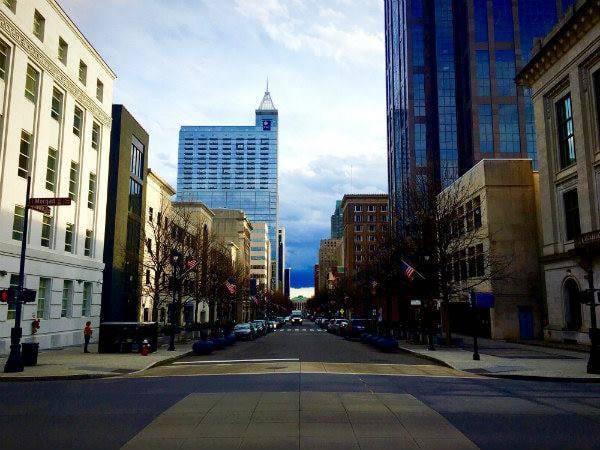
Museum in Raleigh, North Carolina. The City of Raleigh Museum is a local history museum associated with Raleigh, North Carolina. The museum is located in the historic Briggs Hardware Building on Fayetteville Street in downtown Raleigh and has a number of exhibits and programs that are free to the public.[15]
Address: 220 Fayetteville St, 27601-1358 Raleigh (Central Raleigh)
Duke Energy Center for the Performing Arts

Auditorium in Raleigh, North Carolina. Duke Energy Center for the Performing Arts is the main venue for the performing arts in Raleigh, North Carolina.
The naming rights to the center currently are held by Duke Energy (formerly Progress Energy), which purchased them from the city in 2005 for a 20-year term at the cost of $7.5 million. The original naming rights previously were held by Business Telecom, Inc. (now EarthLink)), and the facility was known as the BTI Center for the Performing Arts from 1997-2005. BTI Owner Peter Loftin donated $3.1 million to the center in 1999, matching BTI's earlier donation.
The center consists of:
- Raleigh Memorial Auditorium (opened 1932, renovated 1990)
- Meymandi Concert Hall (opened 2001)
- A. J. Fletcher Opera Theater (opened 2001)
- Kennedy Theater (opened 2001)
- Lichtin Plaza (opened 2001)
Address: Raleigh, 2 East South Street
Reynolds Coliseum

Arena in Raleigh, North Carolina. William Neal Reynolds Coliseum is a multi-purpose arena located in Raleigh, North Carolina, United States, on the campus of North Carolina State University. The arena was built to host a variety of events, including agricultural expositions and NC State basketball games. It is now home to all services of ROTC and several Wolfpack teams, including women's basketball, women's volleyball, women's gymnastics, and men's wrestling. The university named the court in Reynolds "Kay Yow Court" on February 16, 2007 with the assistance of a substantial donation from the Wolfpack Club. That same night, the Wolfpack women upset #2 North Carolina, just two weeks after the men upset #3 North Carolina at the PNC Arena.[17]
Address: 2411 Dunn Ave, 27695 Raleigh (Hillsborough)
William B. Umstead State Park

State park in Wake County, North Carolina. William B. Umstead State Park is a North Carolina state park in Wake County, North Carolina in the United States. It covers 5,599 acres nestled between the expanding cities of Raleigh, Cary, and Durham, North Carolina. It offers hiking, bridle, and bike trails, boat rentals, camping, picnic areas, and educational programs.
Part of the East Coast Greenway, a 3,000 mile long system of trails connecting Maine to Florida, runs through the park.[18]
The Pour House Music Hall

Bar in Raleigh, North Carolina. The Pour House Music Hall is a music venue located in Raleigh, North Carolina. The Pour House was opened in 1997 by Eric Mullen but eventually changed hands in 2012 to current owner Adam Lindstaedt. For a brief period in 2011 Mullen had opened up a second location in Wilmington, North Carolina with some business partners but after a few months they severed ties and the Wilmington venue was renamed The Port City Theatre.[19]
Address: Raleigh, 224 S. Blount Street,, Raleigh, North Carolina, United States
JC Raulston Arboretum
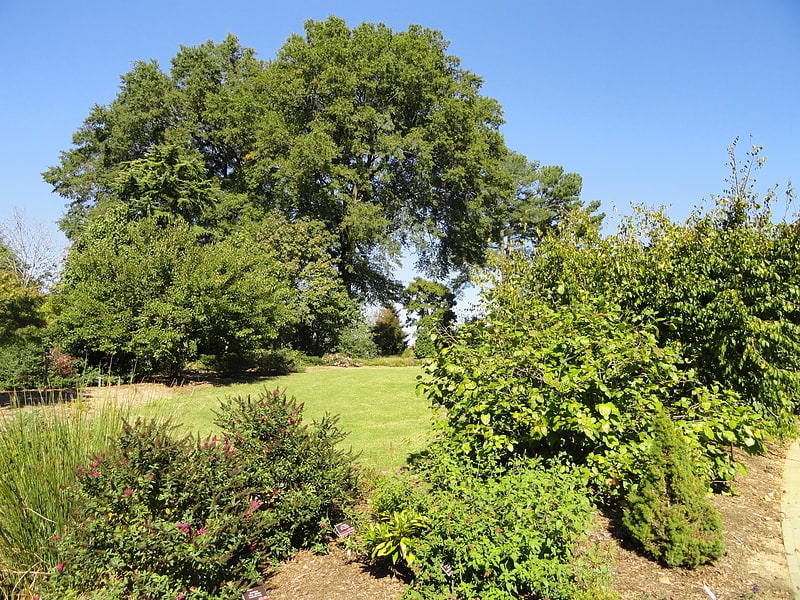
Arboretum in Raleigh, North Carolina. The JC Raulston Arboretum is a 10-acre arboretum and botanical garden administered by North Carolina State University, and located in Raleigh, North Carolina. It is open daily to the public without charge.[20]
Address: 4415 Beryl Rd, 27606-1457 Raleigh (West Raleigh)
Mordecai House
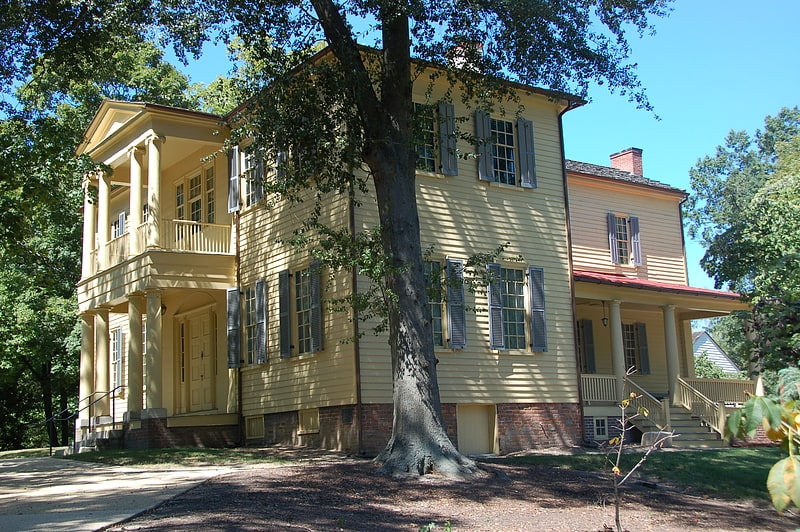
Museum in Raleigh, North Carolina. The Mordecai House, built in 1785, is a registered historical landmark and museum in Raleigh, North Carolina that is the centerpiece of Mordecai Historic Park, adjacent to the Historic Oakwood neighborhood. It is the oldest residence in Raleigh on its original foundation. In addition to the house, the Park includes the birthplace and childhood home of President Andrew Johnson, the Ellen Mordecai Garden, the Badger-Iredell Law Office, Allen Kitchen and St. Mark's Chapel, a popular site for weddings. It is located in the Mordecai Place Historic District.
The oldest portion of the house was built by Joel Lane for his son, Henry. At one time, the plantation house was the center of a 5,000-acre (20 km2) plantation, one of the largest in Wake County. Lane is considered a founder of Raleigh, as 1,000 acres was sold from his plantation as the site of the city.
The house was named after Moses Mordecai, whose first wife, Margaret Lane, had inherited it from her father Henry. After she died, Mordecai married her sister Ann Lane. In 1824, Mordecai hired William Nichols, State Architect at the time, to enlarge the house. The addition was considered a significant work of Nichols, who had also been responsible for remodeling the original building containing the State House. With the addition of the four new rooms in 1826, the Mordecai house was transformed into a Greek Revival mansion.
The Mordecai family, descended from immigrant grandfather Moses Mordecai (1707–1781) of Bonn, Germany, became one of the original three hundred Jewish families in the United States and one of the few of Ashkenazic Jewish descent. The family members were prominent in local and state affairs. Jacob Mordecai, Moses' father, founded a girls' school in Warrenton, North Carolina. A prominent lawyer, Moses Mordecai was a member of the 1805 Court of Conference. With his first wife Margaret, Moses Mordecai had two sons, Henry and Jacob, and one daughter, Ellen. He and his second wife Ann had a daughter, named Margaret after his late wife, Ann's sister. Henry Mordecai became a prosperous planter at Mordecai House and was elected to the State Legislature. The family were also prominent slave owners, and many slaves, both those who worked in the home and those who worked the fields, lived on the former plantation. The State Historic site narrates the stories of both the free and enslaved residents, including moving testimonials from three former slaves. His daughter Margaret Mordecai married and inherited the mansion; her descendants owned and occupied Mordecai House until 1967.
During the 19th and early 20th centuries, the Mordecai family sold off land, which was subdivided for the continuing expansion of Raleigh. In 1867, George Washington Mordecai donated land east of the city to establish a Confederate cemetery; he donated another plot for Wake County's first Hebrew Cemetery. (The adjacent Oakwood Cemetery, chartered in 1869, became the namesake of the large suburb that developed in the adjoining wooded land, which was earlier known as Mordecai Grove. In 1974, Oakwood became the first neighborhood in Raleigh to be listed in the National Register of Historic Places.)
Mordecai descendants owned the mansion property until 1967, when the house and its surrounding block were put on the market. Local preservationists protested and the city purchased the property, turning it over to the Raleigh Historic Sites Commission to supervise and develop as a historic park. The commission was able to obtain many original Mordecai furnishings, as well as preserve the family papers and library. Mordecai Historic Park is now managed by the City of Raleigh's Parks, Recreation and Cultural Resources Department. The Mordecai House is a designated Raleigh Historic Landmark. Mordecai House was featured in a season two episode of Ghost Hunters in which the TAPS team investigated claims of paranormal activity. Mordecai Historic Park has an exclusive paranormal research team since 2017, The Ghost Guild Inc. a registered nonprofit organization that investigates the house and its surrounding buildings at least three times per year. They present their findings at the annual Haunted Mordecai Festival in October.[21]
Address: 1 Mimosa St, 27604-1203 Raleigh (Mordecai)
Historic Oak View
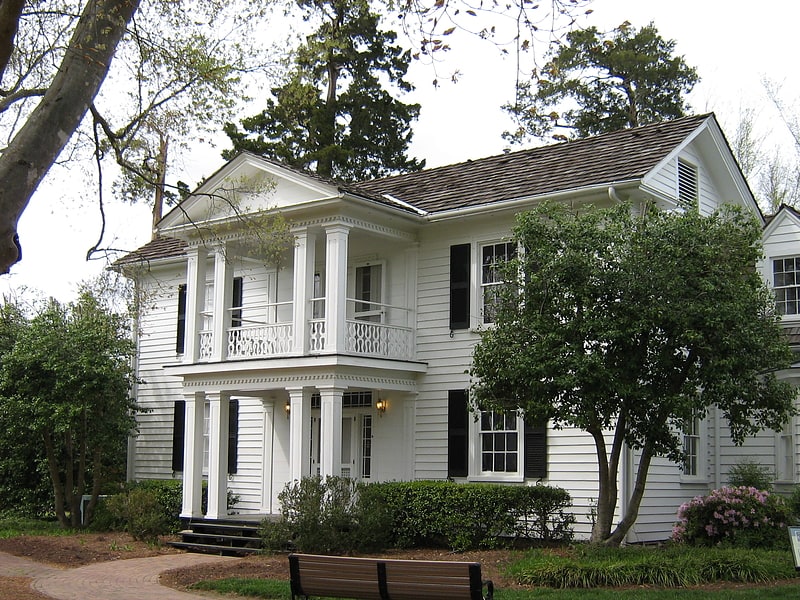
Park in Raleigh, North Carolina. Historic Oak View, also known as the Williams-Wyatt-Poole Farm, is a 19th-century historic farmstead and national historic district located east of downtown Raleigh, North Carolina, United States. Founded as a forced-labor farm worked by black people enslaved by the land's white owners, Oak View features an early 19th-century kitchen, 1855 farmhouse, livestock barn, cotton gin barn, and tenant house dating to the early 20th century. The Farm History Center located on site provides information to visitors regarding the history of the Oak View and the general history of farming in North Carolina. Aside from the historic buildings, the site also features an orchard, a honey bee hive, a small cotton field, and the largest pecan grove in Wake County.[22]
Address: 4028 Carya Dr, 27610 Raleigh (Southeast Raleigh)
Christ Church Raleigh
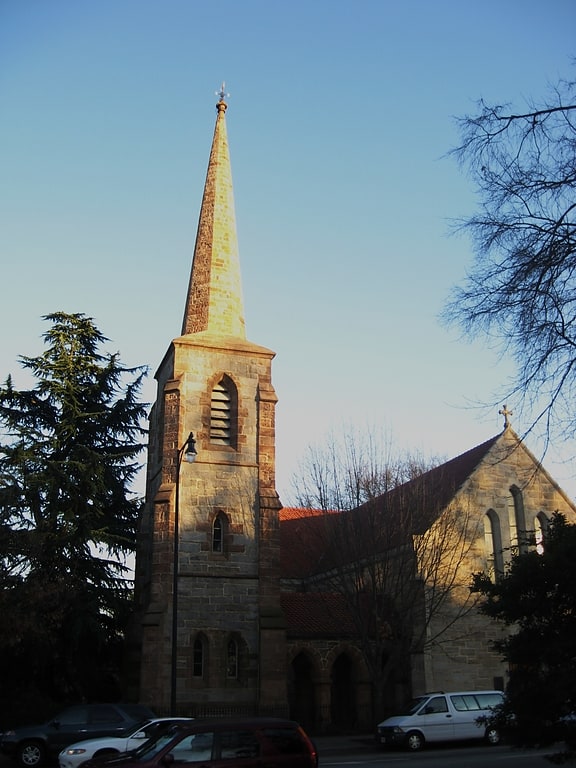
Place of worship in Raleigh, North Carolina. Christ Episcopal Church, also known as Christ Church on Capitol Square, is an Episcopal church at 120 East Edenton Street in Raleigh, North Carolina. Built in 1848–53 to a design by Richard Upjohn, it is one of the first Gothic Revival churches in the American South. The church was built for a parish established in 1821; its minister is the Rev. James P. Adams. It was declared a National Historic Landmark in 1987.[23]
Address: 120 E Edenton St, 27601-1014 Raleigh (North Central)
Raleigh Little Theatre
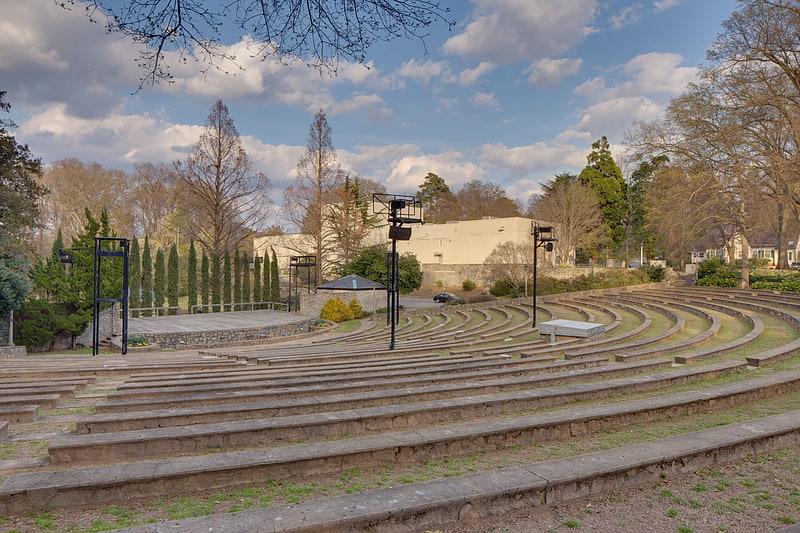
Theatre in Raleigh, North Carolina. Raleigh Little Theatre is a community theatre in Raleigh, North Carolina, that produces 10 to 11 full productions annually and conducts youth and adult theatre education programs.[24]
Address: 301 Pogue St, 27607-7267 Raleigh (Wade)
North Carolina Executive Mansion
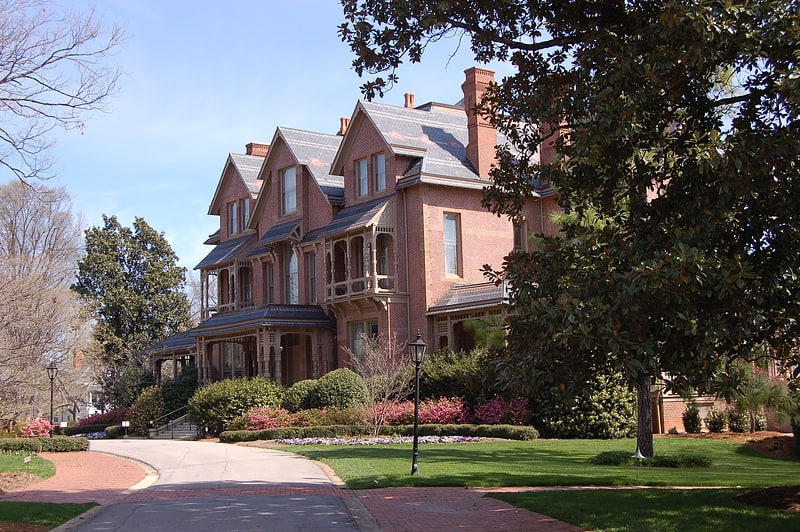
Building in Raleigh, North Carolina. The North Carolina Executive Mansion is the official residence of the governor of North Carolina and their family. Building began in the year 1883 and it was designed by architects Samuel Sloan and A.G. Bauer. The first occupants, Governor Daniel G. Fowle and his daughter, Helen Whitaker Fowle, moved into the unfinished building in January 1891. It is an example of Queen Anne style architecture.[25]
Address: 200 N Blount St, 27601-1073 Raleigh (North Central)
First Presbyterian Church
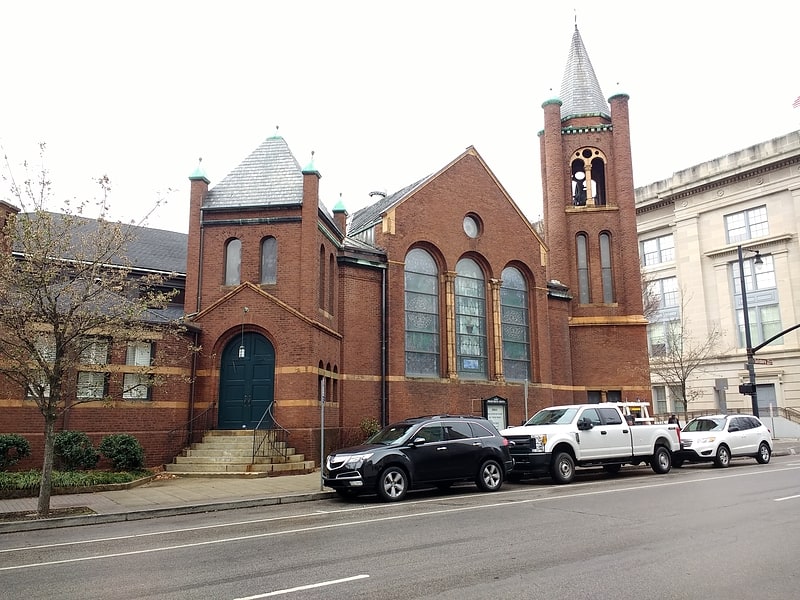
Presbyterian church in Raleigh, North Carolina. First Presbyterian Church is a historic Presbyterian church located at the corner of Morgan and Salisbury Streets in downtown Raleigh, Wake County, North Carolina.
The church was established in a meeting of Presbyterians at the North Carolina State House (predecessor of the North Carolina State Capitol) on Jan. 21, 1816. The congregation purchased land at the present location and erected a brick church building that opened its doors on February 7, 1818. The church served as the site for the State Constitutional Convention of 1835 and as the meeting place for the North Carolina Supreme Court for several years.
That original structure was torn down and a new church building completed in 1900. It was designed in the Romanesque Revival style. The initial design was by architect A.G. Bauer, but Bauer's health problems caused the project to be turned over to architects Charles E. Cassell and Charles Pearson. The sanctuary has been extensively remodeled twice, in 1955 and 2012.[26]
Address: 112 S Salisbury St, 27601 Raleigh (Central Raleigh)
Pope House Museum
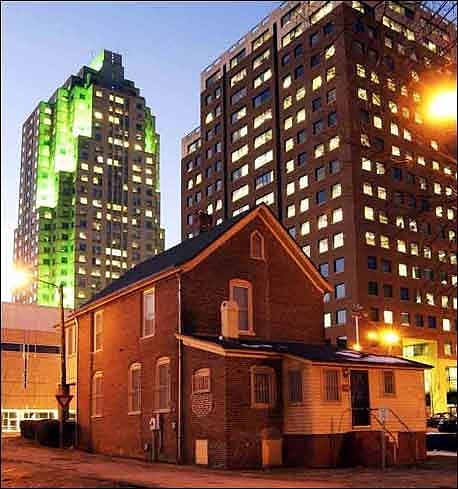
Museum in Raleigh, North Carolina. The Pope House Museum, built in 1901, is a restored home once owned by Dr. Manassa Thomas Pope, a prominent African-American citizen of Raleigh, North Carolina. The Pope House is listed on the National Register of Historic Places in 1999, It was an official project of the Save America’s Treasures Program and the city of Raleigh took over management of it, offering tours for the first time in 2012.[27]
Address: 511 S Wilmington St, 27601 Raleigh (Central Raleigh)
Red Hat Amphitheater
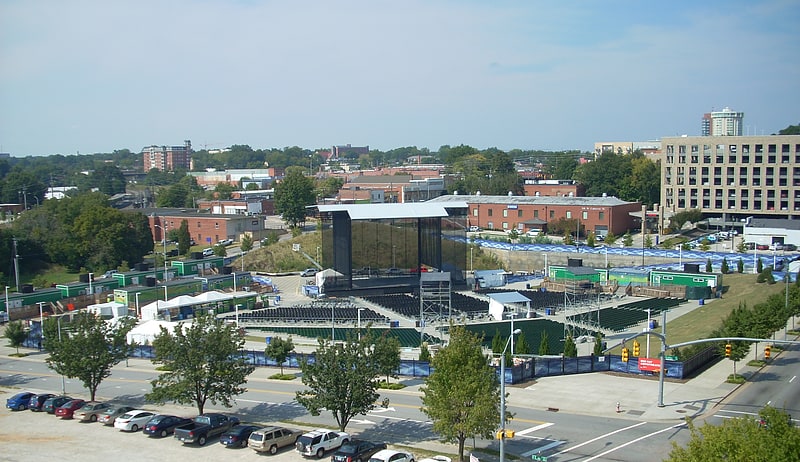
Live music venue in Raleigh, North Carolina. The Red Hat Amphitheater is an amphitheatre in Raleigh, North Carolina. It is adjacent to the Raleigh Convention Center.
The Raleigh Amphitheater books acts through an agreement with Live Nation, and is owned and operated by the City of Raleigh. The Amphitheater’s season currently runs from April through October. Capacity is 5,990: 1,800 fixed seats; 2,700 movable seats; and lawn space for 1,000.
The venue's name has changed several times during its construction and first few months of operation. Plans to accept $300,000 from the local Budweiser distributor to name the venue the Bud Light Amphitheater fell through when the North Carolina Alcohol Control Board refused to grant an exception to rules which disallow naming rights for public facilities to be sold to alcohol manufacturers. On September 4, 2012 Red Hat struck a deal with the City of Raleigh for naming rights to the amphitheater. The company paid the city $1.175 million for the deal.[28]
Address: Raleigh, 500 South McDowell Street, Raleigh, NC 27601
Hillyer Memorial Christian Church
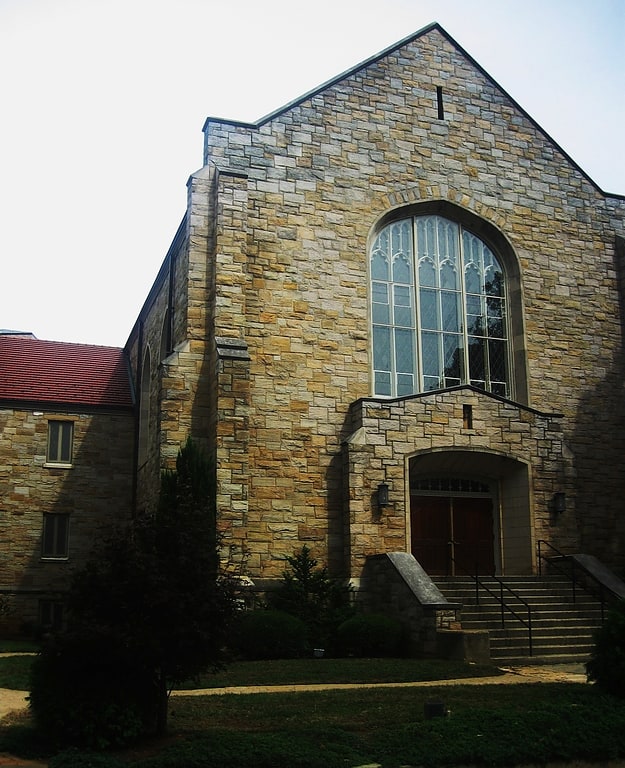
Christian church in Raleigh, North Carolina. Hillyer Memorial Christian Church is a historic church in downtown Raleigh, North Carolina located on Hillsborough Street. The church is affiliated with the Disciples of Christ. The current church was built in 1915. The church is named after the Hillyer family, who were patrons of the church and kept the church from going bankrupt during the Great Depression and the World Wars. The church is under the jurisdiction of the Church of the Disciples of Christ in North Carolina.
Lillian Frances Parker Wallace was choir director. Paul Conway conducted the choir in the 1970s - 1990s.[29]
Address: 718 Hillsborough St, 27603-1698 Raleigh (North Central)
Historic Oakwood Cemetery
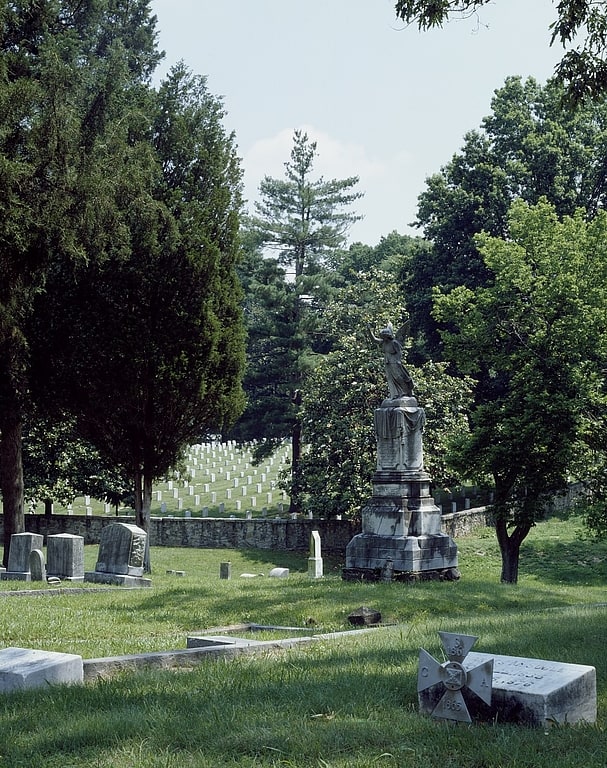
Cemetery in Raleigh, North Carolina. Historic Oakwood Cemetery was founded in 1869 in North Carolina's capital, Raleigh, near the North Carolina State Capitol in the city's Historic Oakwood neighborhood. Historic Oakwood Cemetery contains two special areas within its 102 acres, the Confederate Cemetery, located on the original two and one-half acres, and the Hebrew Cemetery, both given for that purpose by Henry Mordecai in 1867.[30]
Address: 701 Oakwood Ave, 27601-1161 Raleigh (North Central)
City Cemetery
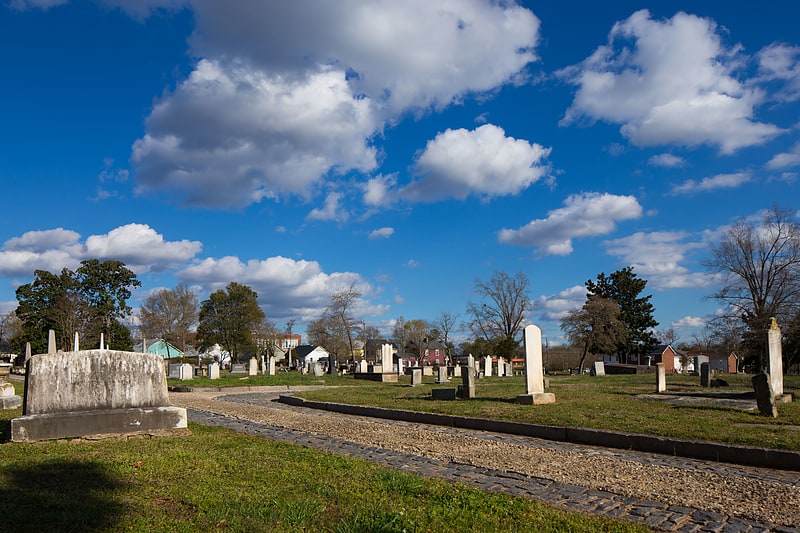
Cemetery in Raleigh, North Carolina. The City Cemetery of Raleigh, also known as Old City Cemetery, was authorized in 1798 by the North Carolina General Assembly as Raleigh's first burying ground. It was laid out on 4 acres of land just outside the original 1792 eastern boundary of Raleigh and bounded by East Street on the west, East Hargett Street on the south, and Morgan Street on the north. It was originally laid out in four equal quarters with the northern two quarters reserved for residents, the southwestern for visitors, and the southeastern for Negroes, both free and slaves. Over time, the cemetery has gradually been enlarged toward New Bern Street in 1819, 1849, and 1856 and now contains approximately 7.5 acres. The cemetery was enclosed in 1898 by a cast-iron fence that was formerly around Union Square to keep straying livestock out of the State Capitol grounds. A network of cobblestone driveways with granite curbstones run through the cemetery. In 1857, the city boundaries were extended to include the cemetery, and the city charter provided for a resident caretaker. Many persons of Raleigh's and North Carolina's early period are interred at City Cemetery including governors, mayors, politicians, newspaper editors, military officers, ministers, doctors, planters, attorneys, bankers, and Scottish and English stonemasons who helped build the Capitol.
City Cemetery was listed on the National Register of Historic Places on 12 September 2008.[31]
Address: 15 S East Street, Raleigh (South Central Raleigh)
Cloud Chamber for the Trees and Sky
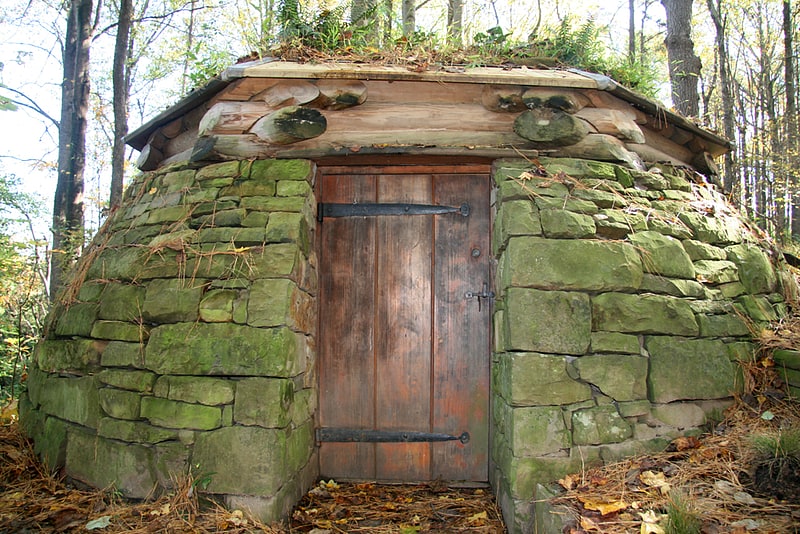
Cloud Chamber for the Trees and Sky is a site specific outdoor artwork by Chris Drury. It was commissioned by North Carolina Museum of Art in 2003 made possible by the Robert F. Phifer Bequest and located in the 146 acre museum park adjacent to the museum known as the Ann and Jim Goodnight Museum Park at state capital Raleigh. The artwork is situated in woodland with other large sculptures and is accessed along a woodland path.
The chamber itself is a round building built of stone, wood, and turf approximately 12 feet in diameter (3.66 metres) with a single door to admit the viewer. It is light-tight when its door is closed, except for one small, round opening in its roof which allows the building to act as a camera obscura. Images of the sun, clouds, and trees are projected onto the smooth white walls of the interior of the chamber. Classed as a public artwork, there is no admission charge to the park.[32]
Address: 2110 Blue Ridge Rd, 27607 Raleigh (Northwest Raleigh)
Raleigh National Cemetery
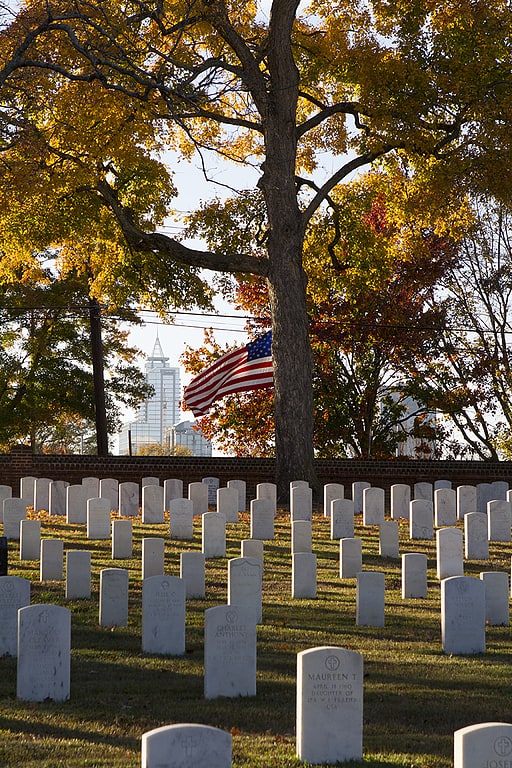
Cemetery. Raleigh National Cemetery is a United States National Cemetery located in the city of Raleigh in Wake County, North Carolina. Administered by the United States Department of Veterans Affairs, it encompasses 7 acres, and as of the end of 2005, had 6,000 interments. It is currently closed to new interments and is maintained by New Bern National Cemetery.[33]
Address: 501 Rock Quarry Rd, 27610-3353 Raleigh (South Central Raleigh)
Artspace
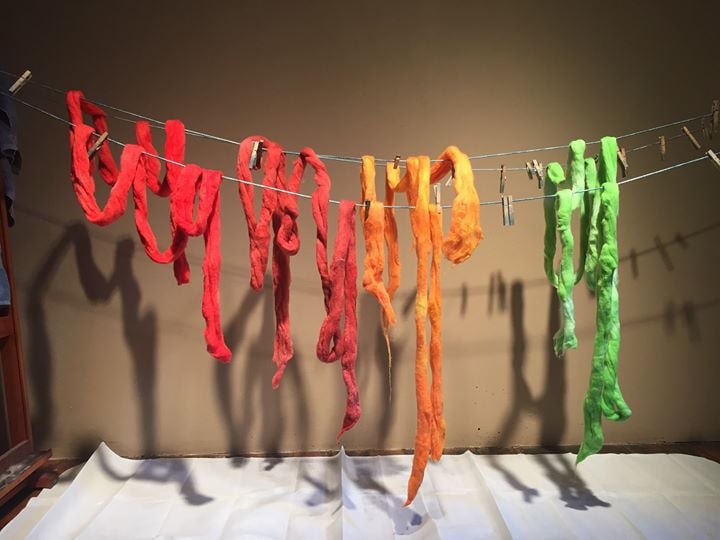
Museum, Art gallery, Shopping
Address: 201 E Davie St, 27601-1869 Raleigh (Central Raleigh)
Raleigh Convention Center
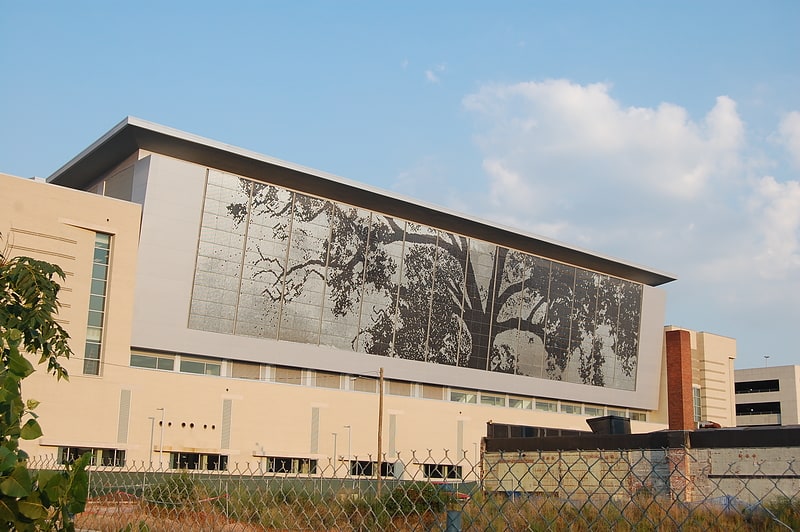
Convention center in Raleigh, North Carolina. The Raleigh Convention Center is a convention and exhibition facility in downtown Raleigh, North Carolina that opened in September 2008. The architect was Tvsdesign with the participation of local firms O'Brien/Atkins Associates and Clearscapes.[34]
Address: 500 S Salisbury St, 27601-2114 Raleigh (Central Raleigh)